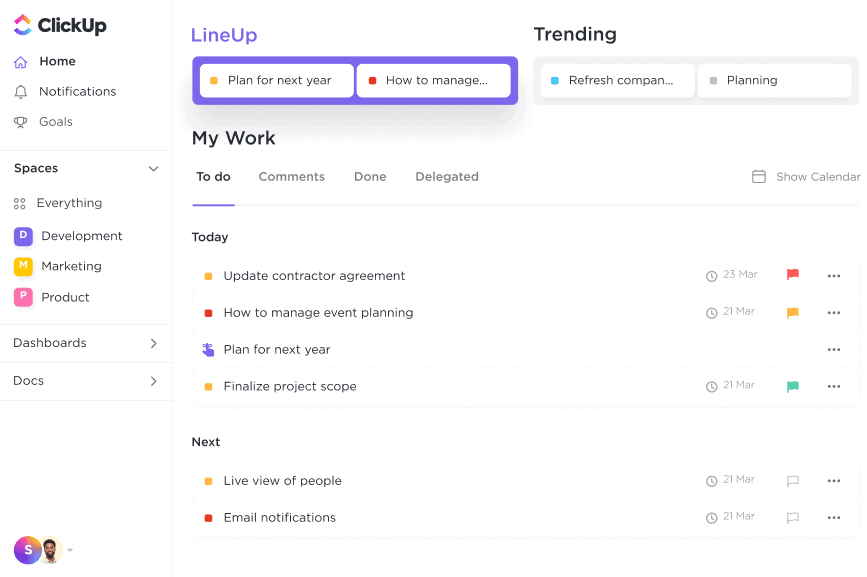We are living through a pivotal moment in history. The technologies that will determine the shape of our new century—like artificial intelligence, quantum computing and digital engineering—will come of age this decade.
“I believe we are in one of those pivotal moments where it is vital to throw off old conventions,” Rear Adm. Lorin C. Selby, USN, chief of Naval Research, said in a speech last year. “Our time to innovate is now. If we lose this decade of progress, I don’t think we can make up lost ground.”
In the era of near-peer competition, innovation means moving with the speed and agility of software. But it also requires security, so that our hard-won advances don’t end up being stolen by enemy hackers and weaponized against us.
Adm. Selby has charged the Office of Naval Research (ONR) with enabling that secure, agile innovation—leveraging partnerships with industry and academia, for example through NavalX, the service’s technology accelerator.
To extend the reach of its innovation efforts across the whole country, NavalX established 18 Tech Bridge centers at naval bases from coast to coast.
But even with this nationwide presence, to effectively scale innovation and deliver new, secure capabilities swiftly to warfighters, the Navy must confront the “Problem of Place”—talent is dispersed, stakeholders may be based far away and leaders are often on the move. Cross-functional teams work through complex challenges that cannot be solved in a phone call or even an IRL meeting. Successful, agile collaboration requires hybrid or remote environments. To fulfill its innovation mandate, the Navy needed new processes and tools to accomplish this.
“It’s no coincidence that innovative organizations at the pivotal point where they’re trying to scale innovative practices across the DoD should look to adopt secure tools that help with agility and communications,” says John Greenstein, general manager of Bluescape Software’s global public sector business. “There are literally hundreds of thousands of active duty service members who innovate on a daily basis and who need basic tools to address the complexity that they’re facing.”
Bluescape is a fully featured suite of collaboration tools enabling the creation and sharing of knowledge among teams through the organization and presentation of content. “It’s much more than just screen sharing,” says Greenstein. “Bluescape offers a shared workspace where collaboration can happen in person or remotely, seamlessly and easily, increasing productivity and enabling innovation.”
Agile collaboration requires rich multimedia idea generation and refinement with images, videos and documents all shareable and workable in a single shared sandbox.
It needs virtual equivalents of the physical tools traditionally found in conference rooms—such as tables, whiteboards and sticky notes—so that in-person workflows can be seamlessly ported to remote and hybrid environments.
“It’s amazing what happens when the warfighter is given secure tools to collaborate with,” Greenstein says.
Security with agility
Bluescape recently received an Authority to Operate at Impact Level 5 (IL5 approving it to handle Controlled Unclassified Information on DoD networks), and was deployed on the Naval Systems Engineering Resource Center, or NSERC, network.
“As far as we know,” says Greenstein, “Bluescape is the only SaaS-based technology application for visual collaboration available at that level. We were able to earn our accreditation rapidly—in a matter of months—in part because of the support we have from naval leadership, but also because the demand signal is so strong. There’s just such a need on behalf of the warfighter community and everyone who supports them with a real sense of urgency to be more agile, and to deliver capabilities more rapidly. That’s what our software enables.”
In addition to NavalX, CyberWorx, the Air Force’s cybersecurity innovation hub, has also deployed Bluescape. Indeed, CyberWorx sponsors Bluescape’s Federal Risk and Authorization Management Program (FedRAMP) certification, so that it can also be used on civilian government systems. Earlier this year, Bluescape achieved an “in process” designation from FedRAMP at the moderate impact level.
And Bluescape walks the walk. “We drank our own champagne,” says Greenstein, pointing out the company used its own collaboration tools to accelerate work with CyberWorx on the FedRAMP approval process.
Bluescape’s certifications mean it is fully aligned with the requirements for critical software security outlined by the National Institute of Standards and Technology and imposed by the Office of Management and Budget in its M-21-30 memorandum. Bluescape also aligns with the requirements of a zero-trust architecture.
It can be deployed in cloud, on-premises, or into hyperscale environments, depending on the security posture of the organization.
And Bluescape uses a completely U.S.-based software development supply chain and stores all its data onshore, reducing supply chain risk.
Solving the Problem of Place
In the globalized world of the 21st century, collaboration tools have to work across agency silos and with private sector partners—enabling virtual workspaces and remote teams to operate securely across an entire ecosystem.
“A simple tool like an online whiteboard solves the ‘Place Problem’ and gives rise to a shared understanding and better, innovative mission outcomes,” says Greenstein.
Real-time detailed collaboration tools enable a virtual war room or command center when the participants can’t be physically collocated, points out Greenstein. “When you don’t have a physical place to meet, and you need a temporary operations center, you have to go virtual, so one of our public sector customers has used Bluescape for that, for their virtual command center for big international events like the Olympics.”
Perhaps the most ambitious global collaboration using Bluescape is being run by the UK’s Royal Air Force. The RAF, with partnership from the USAF, is supporting the Global Air Forces Climate Change Collaboration. It’s a forum among more than 40 allied air forces to share ideas, best practices and lessons learned to reduce greenhouse gas emissions and operate more efficiently. The forum is using Bluescape to facilitate its activities, including its 20-plus working groups, as it plans for the unveiling and signing of a global concord—“a sort of statement of intent,” Greenstein says—at the Global Air Chiefs’ Conference in London this month.
Bluescape has been used for collaboration as a substitute for in-person meetings, but also to enhance in-person meetings. “It’s like you have this virtual conference room and you can carry it around,” says Greenstein. “It’s always there online and when you’re meeting in person it’s also in London or Tokyo, or wherever you happen to be.”
“Think about a cyber incident response,” says Greenstein, “and all the different stakeholders involved. You’ve got to meet somewhere.
“There’s got to be some secure place where everyone can bring their information and we can dynamically build a common operating picture. Because we’re FedRAMP moderate, we can facilitate interaction with academia and the private sector. Someone brings the Splunk logs, someone else brings the network mapping. The FBI can take part because it’s secure and, if you need to move something to the high side, you can do that seamlessly because Bluescape can operate in all those security environments.
“We’re the only ones that can do that,” he concludes.
Top secret cloud deployment
Bluescape was one of the first cloud deployments to get top secret accreditation. The company also got early support from In-Q-Tel, the intelligence community’s venture capital arm. “Although we got this early public sector support, our roots, and most of our business is still in the private sector, working with top global brands such as Netflix, Warner Brothers and Ford,” says Greenstein.
“All of the richness, the ease of use and the excitement you get from using a consumer product, that’s in our DNA,” says Greenstein, “And we’ve hardened all of that for public sector use.”
But that DNA means that, uniquely, Bluescape offers a solution that’s usable at a broad range of security levels, from public all the way through top secret.
Go to bluescape.com/government for more information.




